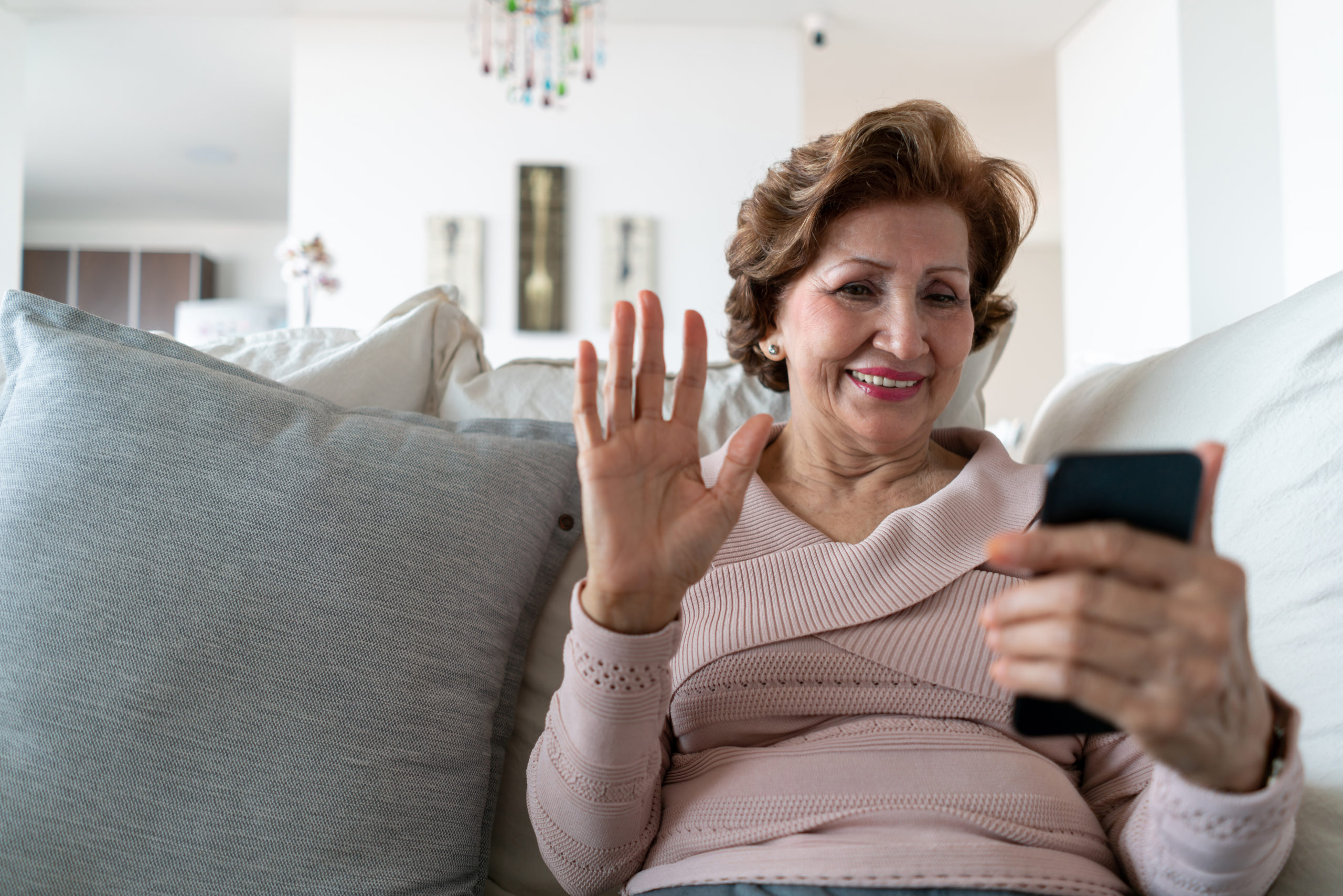4 Min Read
Stay Connected with Loved Ones During COVID-19

Social distancing may protect our most vulnerable loved ones, including seniors, but it may also lead to feelings of loneliness or self-isolation. According to research, about a quarter of people over the age of 65 living independently are already considered socially isolated—and about 43 percent of those over the age of 60 report feeling alone or lonely. All this was before COVID-19 social distancing restrictions.
Isolation is a real risk to the health and happiness of seniors. In fact, it’s even associated with higher rates of heart disease, stroke, and dementia, as well as incidences of depression and anxiety.
Although you may want to visit your elderly loved ones at home or in assisted living facilities, it’s not the safest idea right now. And, in some cases, health guidelines may prohibit it altogether. But, there are some creative ways to stay connected and keep communicating.
Take advantage of technology: FaceTime, video chat, Zoom, Skype, and more.
Social distancing doesn’t have to equal social isolation or loneliness. While we’re working to keep older adults safe, we should also encourage senior loved ones to continue social engagement in safer ways. To help them feel involved and connected while also safe and healthy, encourage your loved ones to use technology. A simple phone chat can help to reduce feelings of social isolation.
Show them how to video chat using their smartphones, computers, or tablets. Use apps that provide closed captions if needed, and encourage family and friends to check in with them frequently by phone call or video chat. If they love cooking or gardening, show them YouTube videos with tutorials. Especially if your loved one is in senior or assisted living right now, show them how to keep in touch with family and loved ones in other ways using their smartphones, iPads, or computers.
Visit in person—from a distance.
This is something we’ve encouraged frequently at Grand Oaks. While we continue to monitor the COVID-19 pandemic and restrict visitors from entering the property, many families have found creative ways to connect with residents.
A few weeks ago, when one of our residents celebrated a special birthday, friends and family visited from a distance, sharing signs of well wishes and support. In these unique times, it brings us and our residents joy to see folks finding unique ways to connect with and show the people in their lives how much they care.
Write a letter.
A personal, handwritten letter or card can go a long way in letting your loved ones know you are thinking of them. Giving your elderly loved one—or even sending to a stranger in assisted living—is a pleasant surprise for anyone feeling alone during these stressful times.
For those used to having visitors or being in close connection with their community, cards, drawings, and letters can help to combat loneliness and provide a little support and encouragement from a safe distance.
It may also invoke feelings of nostalgia for the age-old pastime of letter writing, especially beneficial for seniors with Alzheimer’s disease and other forms of memory loss. Studies have found that letter writing is good for the health and overall well-being of seniors. It improves memory function, invokes comfort and familiarity during their younger years, inspires creativity, and reduces loneliness.
Send special deliveries.
For seniors staying home alone, running out of food, medications, and other necessities can be a real risk. Consider sending supply boxes or ordering groceries or meals to their homes. If your loved one is in assisted or senior living, where these basic needs are taken care of, consider more personal gifts instead, like organizing and sending old family photos or memorabilia. Send a favorite family recipe or share songs and movies with the people you love.
At Grand Oaks, as Father’s Day approaches, we’re encouraging family members to send family photos and personal notes to their loved ones. We’ll use these to celebrate the holiday and create a remarkable day for our residents during these unprecedented times. As a reminder, all deliveries must arrive sealed in an appropriate cardboard box or packaging that may be electrostatistically disinfected before entering the community. You can learn all about those safety measures here.
Look for unique activities you can do together.
While it may not be possible to read a book or watch a movie together in person, you can still read or watch separately and discuss it over the phone or video. If your loved one loves to read, for example, consider creating a bi-weekly book club. Pick a book you’d both enjoy, read it separately, then set up a virtual date to chat about it on Zoom or Skype. The same goes for movies, cooking, games, concerts, and any other mutual hobbies or interests.
Think beyond the usual circle of friends and family.
There are so many ways to build and grow connections while quarantining, like saying hello to your mail carrier each day. These simple acts of kindness add a sense of connectedness and engagement. And, they don’t always have to occur between seniors and their family members or friends.
For example, many faith communities have taken their services online. If church services are usually your loved one’s main source of socialization, show them how to find online services instead. There are online discussion groups solely for seniors, too. SeniorChatters, for example, allows older adults to engage in different topics online. They can “meet” seniors all over the world and discuss their favorite hobbies together. There are plenty of senior chat rooms and groups available online.
Similarly, if you know an older person in your neighborhood who lives alone and may be at risk of feeling isolated, check in on them when you can. If you’re planning a grocery store run, for example, ask if they need anything before you go.
How are you staying connected with your loved ones during this time?

0 Comments